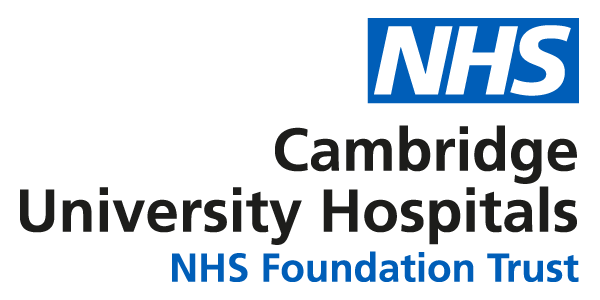Who is this leaflet for and what is its aim?
This leaflet provides information for parents and guardians about squints (strabismus) in children. It answers common questions about these, how they can affect vision, and the treatments available.
How do the eyes work together?
When the eyes work together as a pair, they will be focusing at the same point when we look at an object. The brain will receive similar pictures from each eye so it can join them together to allow you to have binocular and three dimensional (3D) vision.
Each eye has six muscles that move it in different directions. These muscles work together to keep both eyes pointing the same way. The way the eyes line up with each other is called their alignment.
What is a squint?
A squint (strabismus) is when the eyes do not look in the same direction (not straight). When an eye turns inwards, it is called a convergent squint (esotropia) and when it turns outwards it is called a divergent squint (exotropia). Less commonly, the eye may turn upwards or downwards (vertical squints). This may not always be obvious - some squints are very slight, and some are only present some of the time.
Most commonly, only one eye turns and the other one looks straight but sometimes the turn swaps from one eye to the other (alternating squint), this is not a bad thing and is often a sign that the child can see equally well in each eye. The squint may be present all the time (constant squint) or only some of the time (intermittent squint).
The example below shows the right eye turning inwards (esotropia) and the left eye looking straight ahead. This condition is not always as obvious as shown here.

The picture below shows the left eye turning outwards (exotropia) and the right eye looking straight ahead.

Squints are quite common and occur in approximately 1 in 20 children.
When does a squint usually occur?
Some babies are born with a squint (strabismus); some babies and children develop a squint later. A squint that develops later (an acquired squint) may occur when the eye is trying to overcome a vision problem, such as short-sightedness, but in many cases the cause is unknown. Rarely, a squint may be caused by a condition in the eye itself.
How are squints diagnosed (detected)?
Your child will have a full eye examination, including vision testing, an orthoptic assessment (to check eye movements and eye alignment) and an eye examination by an Ophthalmologist or optometrist. The Orthoptist specialises in assessing how well your child can see and how well their eyes work together. They will take measurements to determine the type and size of the squint.
Eye drops are often used to widen (dilate) the pupils so the eyes can be examined in detail.
After the examination, the clinician will explain your child’s diagnosis and discuss the treatment options.
What are the causes of squint?
There are many different types and causes of squints.
Squints can appear in early infancy or later in childhood and may run in families. They are sometimes linked to long-sightedness (and less often short-sightedness). Occasionally, they are linked to problems with the nerve supply to the eye muscles — known as a cranial nerve palsy or paresis — or to problems within the eye itself.
In many cases, the exact cause is unknown. Your child’s eye specialist will explain the type and possible cause of your child’s squint after a full examination.
How squints affect children’s vision
Children with a squint may develop reduced vision in the affected eye, known as works best before about 7–8 years of age, while the eyes are still developing.
A squint can also affect depth perception and 3D vision, making activities like walking downstairs or catching a ball more difficult. Older children may sometimes experience double vision, which they may try to reduce by tilting or turning their head.
What is the treatment for a squint?
The treatment for a squint depends on its type and cause.
This often includes:
- Glasses: Your child may need glasses to help their eyes focus properly and sometimes to make the squint less noticeable.
- Patching: If your child has a “lazy eye” (amblyopia), patching the stronger eye for a few hours each day can help improve vision in the weaker eye. Patching helps vision but does not change the size of the squint. More information about amblyopia can be found in our leaflet on this .
- Surgery: If glasses alone do not fully correct the eye position, the eye specialist (Consultant Ophthalmologist) may recommend an operation to improve the eye alignment. Squint surgery helps straighten the eyes but does not improve eyesight itself.
- Other treatments: Sometimes, eye exercises, or a combination of the above treatments may be recommended to help the eyes work better together.
In some cases, no treatment is needed, but your child may be asked to attend regular check-ups in the eye clinic to monitor their vision and eye alignment.
Because there are many different types of squint, the best treatment will depend on your child’s individual needs. The Orthoptist will discuss the options and guide you through each step.
Contacts and further information
If you have any questions or concerns, please contact the orthoptic department on 01223 216528 or email CUH Orthoptics.
We are smoke-free
Smoking is not allowed anywhere on the hospital campus. For advice and support in quitting, contact your GP or the free NHS stop smoking helpline on 0800 169 0 169.
Other formats
Help accessing this information in other formats is available. To find out more about the services we provide, please visit our patient information help page (see link below) or telephone 01223 256998. www.cuh.nhs.uk/contact-us/accessible-information/
Contact us
Cambridge University Hospitals
NHS Foundation Trust
Hills Road, Cambridge
CB2 0QQ
Telephone +44 (0)1223 245151
https://www.cuh.nhs.uk/contact-us/contact-enquiries/

